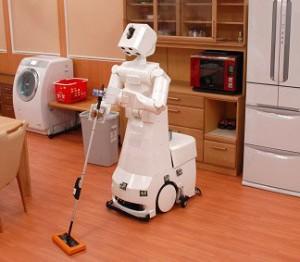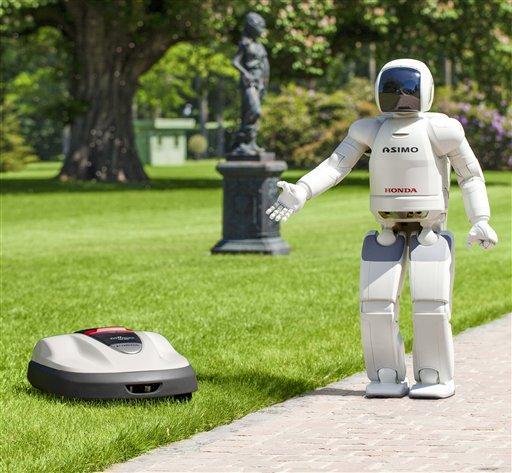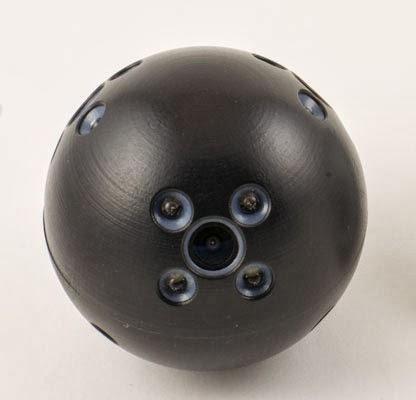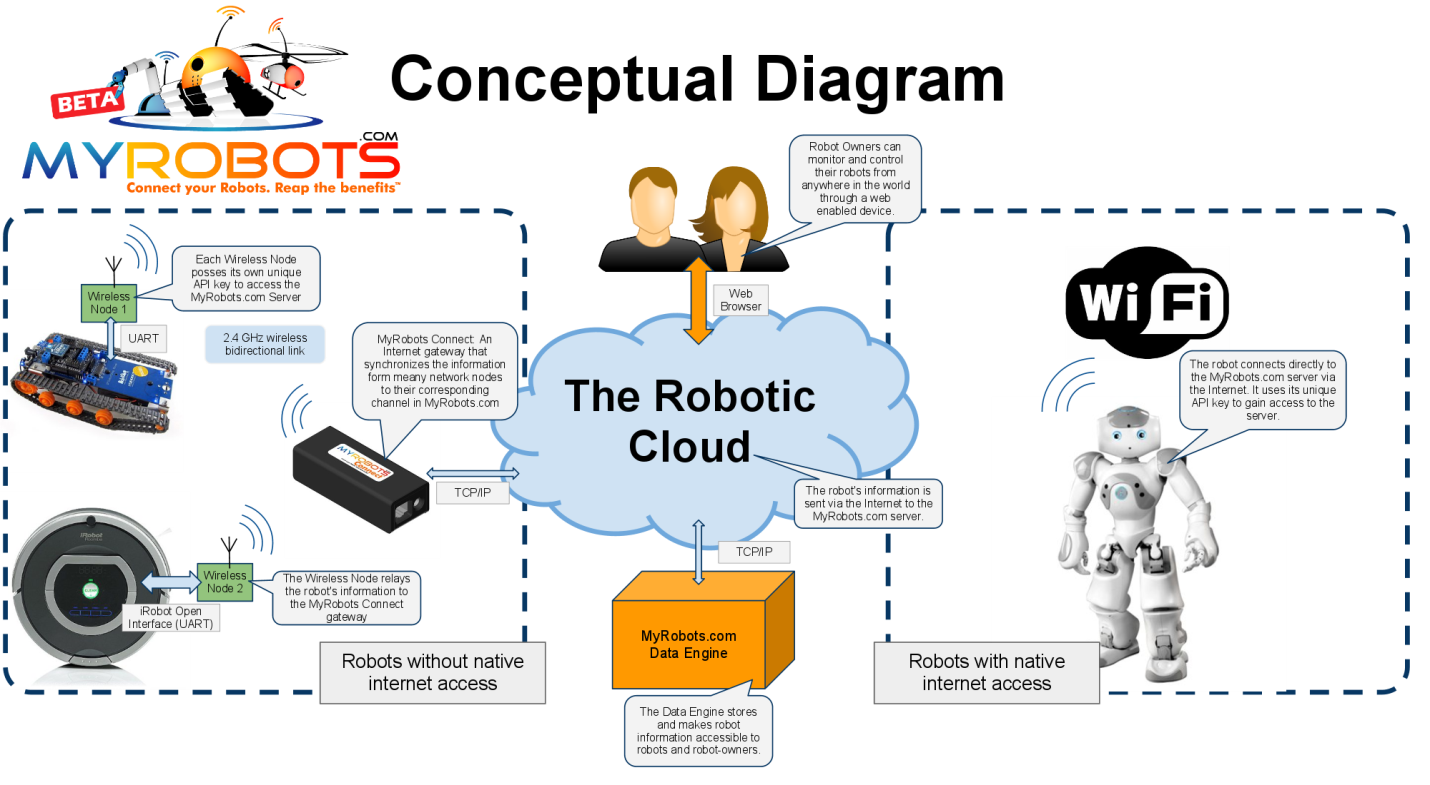Executive Summary
Home robotics is one of the biggest inventions in the field of science that has attracted attention of many researchers. The society has come to realize that some of the tasks undertaken by human beings can be addressed by the robots. This is coming at a time when slavery has lost its meaning, and many households are finding it difficult to carry out some chores. Home robotics has been in existence for some time now, but there has been a recent force that seems to propel it to higher heights.
The experts in this field have realized that these robots can be programmed to act as human beings, and undertake various chores just as a rational person would do. However, the experts have met numerous challenges that have slowed their work. There have been technical, social, and financial issues that have slowed the capacity to produce quality products in the market. According to the research works that were analyzed in this study, success can only be achieved if these challenges are adequately addressed by the relevant stakeholders.
Terms of References
Home robotics has gained massive popularity in the recent past and there has been an argument that its massive development and adoption may be witnessed over the coming decade. In this research, the focus was to study and evaluate the contemporary developments in this field, and its future within the next decade.
Introduction
Home robotics has gained a lot of popularity in the recent past to help in addressing some home chores that were previously done by human beings. According to Purser (2004, p. 28), the emerging technologies is revolutionizing the field of robots as human beings try to come up with new and more sophisticated tools that can do some of the tasks done by human beings. Although the experts who have been working in this field have been facing many challenges in developing an appropriate prototype that can use universal program, the advances they have already made is evident.
In the United States, the United Kingdom and other developed nations, home robotics has become common in the streets (Bryson 2011, p. 83). Some of these robots are simple tools used for cleaning the floor, or monitoring the security within the home. However, scientists are determined to come up with more complex tools with higher capacity. There is an attempt to develop robots that can reason like a human being and address some of the home chores without the direction from a human being. In this research, it would be important to evaluate the contemporary issues regarding home robotics, and how it may impact on our decision making process.
Findings and Analysis
Current Situation
The field of home robotics has become very relevant as people realize new needs that should be addressed by the robots. According to Boddy and Kennedy (2008, p. 57), in the modern world, slavery has completely lost its meaning. Some of the families are even reluctant to hire the house helps or gardeners because they consider this modern day slavery. As the society develops, people have come to realize that it is necessary for some of the tasks that are currently being done by human beings to be addressed by machines. According to Elkin and Law (2000, p. 30), it has become evident that scientists have been spending long hours to develop tools that can be used to address some of the household chores.
Home robotics has been at the centre-stage of all these research. It is now common to find homes where cleaning of the floors or cleaning of the compounds is done by the robots (Cox 2001, p. 67). Although these robots still depend on people who must control them when addressing these chores, it would be important to appreciate that this is a milestone that has been made in this field. Instead of toiling trying to clean the compound, one can now use a remote control and monitor how a robot conducts the heavy activity of cleaning. This massive development has been possible because of the amount of input of many scientists in this field.
Home robotics is expected to take more advanced approach in the society in the coming years. Burgess (2002, p. 40) says that some of the technological advancements experienced in the recent past is likely to improve the capacity of the scientists in this field to come up with more advanced home robotics that have the capacity to address some of the chores at home. As mentioned before, the ultimate aim has been to develop a robotic system that has the capacity to make decisions and address some of the household chores without any direct supervision of people.
According to Taylor (2004, p. 74), robotics are expected to replace slavery that proved beneficial to the previous generation. These robots should be able to undertake activities that would otherwise need the attention of a human being. This means that they must be rational in their reasoning, and their actions should be a reflection of what a rational human being would do when left to undertake these activities.
Problems Faced in this Field
Developing more advanced home robotics has not been without challenges. According to a recent article by Bill Gates, the computer guru predicted that the field of robotics is the next big thing that should be given a lot of attention in order to tap from its benefits. However, Gates noted that some of the serious challenges they experienced three decades ago when developing personal computers is the same problems that experts in the field of robots are facing currently.
He was able to link the pattern or trend they took when developing personal computers to the path that has been taken by scientists in this field when coming up with robots. He was categorical that the path is still long, and it will take some time and effort to come up with the right prototypes for different kinds of robots that would undertake various tasks that are currently undertaken by the human beings.
The process of developing the robots has been faced with numerous challenges that have slowed the progress in this field. One of the main problems that scientists in this field have found unique is the lack of moral support from members of the society, especially from the religious leaders. Most of the religious groups have equated the attempt to come up with more sophisticated robots to a competition with God. They argue that this is a direct attempt by these scientists to try and come up with artificial human beings, while creation should solely be left to God.
Some of the religious scientists have withdrawn from further explorations in this field, opting to venture into fields that have lesser controversies. Another argument has been the capacity of these robots to behave as weapons that can be programmed to harm people. According to Shajahan and Priyadharshini (2004, p. 84), some rogue scientists have been trying to develop robots that can be used in such dangerous activities such as assassination. This has brought a lot of mistrust as members of the society feel that this tool is meant to create harm other than help create a harmonious society.
The main scientific challenge that these scientists have faced is in developing a prototype that can be used with a specific program when developing robots that can address specific issues. According to Oz (2009), the robots that are currently in use lack the capacity to use a standardized program. This means that each robot that is developed must have its own unique program that can only work on its system, and not in any other robotic system.
This means that it is still not easy to come up with mass production of some of these robots. It also means that the approach that one robot will take in addressing specific chores like cleaning, may not be the same as the approach that will be taken by another robot when addressing the same task. This means that the user will have to learn how to control each of the robots once there is a need for a replacement.
It has also posed a serious challenge when it comes to the cost of producing these robots. It would be easy and less costly to use a universal prototype that can accept a given program when making mass productions of the robots. However, it takes longer time and higher costs to develop new prototypes every time there is a need to develop a new robot (Xu & Quaddus 2013, p. 20). These challenges have slowed the rate of developing sophisticated robots with higher capacities than those that are currently in use. The experts in this field must find the best approach that can be used to address this issue.
Solution to the Problems
According to Eppler (2006, p. 50), robots have been considered to be the next big thing in the field of technology. However, it is important to understand that this can only be possible if a breakthrough can be found to address some of the challenges that have been outlined above. An article written by Bill Gates about the problems they faced when developing personal computers about three decades ago is very important when looking for solutions.
It may be the right start for these scientists to start addressing some of the issues that hinder them from succeeding in this field. One thing that these scientists must appreciate is that, during the time when Bill Gates and his peers were developing the concept of personal computers, they did not meet any serious resistance from powerful members of the society such as religious leaders (Schwalbe 2011, p. 42). This means that scientists dealing with the robots will need to find a unique way of convincing this group of society members that their work is not in any way related to creating other human beings that would parallel God’s creation.
A breakthrough will only be found if these stakeholders will be able to develop prototypes that can be run by universal programs, just like it is the case with personal computers. This means that a home robotic should be universal, based on the program they use to run these activities (Heijden 2009, p. 87). This makes it easy to predict their efficiency in undertaking these tasks. The users will also have lesser difficulties in using them because of this universality. This can be achieved through a detailed research in this field to advance the current systems.
The work of the past scientists has enabled us to be in the position where we are today in this field. It is the responsibility of the current experts to take this research to the higher level. The robots can only perform the unique tasks if a prototype can be developed that will enable mass production using the same program. As Bill Gates mentioned, this will not only need massive dedication of time by the experts, but also a high financial investment from the sponsors of these projects. The ultimate aim would be to find a prototype that will help cut cost of production by using a standardized procedure and a similar program for all the robots (Laudon & Laudon 2002, p. 67). It is only through this that the commercialization of these machines will be possible.
Critical Evaluation
It is important to critically evaluate the path that has been taken in the development of home robotics, and some of the future benefits that it may offer when the process is successful. It is important to understand these concepts based on the research that has been conducted by various scholars in this field. The path that has been taken in coming up with home robotics has been characterized with many challenges.
Vacca (2014, p. 59) says that it may not be easy to determine when the idea was fast developed because these robots have been the advancement of some of the modern tools and machines that are meant to make work easier. For instance, the automatic robot vacuum cleaners are advancement of vacuum cleaners that have been in the industry for some time now. The only thing that has changed is the manner in which this tool is controlled. This is attributed to the technological advancements in this field (Kamel 2003, p. 49). However, the new system that is currently being implemented has a higher capacity to undertake activities that have always been undertaken by human beings.
The unique feature of these robots is their ability to make their decisions based on the programs that are set on them (Al-Hakim, 2007, p. 97). Some of these robots are expected to drive cars without any direct control of a human being. The home robotics is expected to undertake household chores without the presence of a human being. This means that one can program the robot, go to work, and come back after several hours to find various house-hold chores effectively addressed. Some of the benefits that these robots are expected to bring in the future are as follows.
- Some of the tedious household chores such as cleaning the compound and washing various home appliances will be addressed by the robots. Appendix 1 and 2 shows a house cleaning and lawn mowing robots at work.
- The robots are expected to improve on efficiency and speed when addressing various household chores.
- Entertainment has been enhanced with the development of robotic cloud that enable users to share information. Appendix 4 shows how this is done.
- Some scholars argue that these robots may play a role in decision support systems when addressing complex issues at home or in the workplace.
- The robots are expected to increase security at home (Kelkar 2003, p. 36). It will be possible to monitor activities using the robots and that message can be passed to the relevant authorities or individuals about the possible threat posed by an intruder. Appendix 3 shows a robot that can be used to monitor any intrusion into the compound.
- The robots can play a vital role in improving communication at home. It can be programmed to help receive information, store it, and pass the same to the relevant individuals whenever this is necessary.
Scholars have argued that these robots are not only meant to improve the management of information. They have the capacity to do more than this, both at home and in the workplace (Lubbe 2007, p. 75). A critical analysis of the current capacity of the robots shows that the experts still have a long way to go in developing a human-like robot.
Conclusion
The scientists have realized that there is a need to develop home robotics that can be used to address household chores, especially those that are always considered strenuous. Home robotics is important in the current society where slavery has become a thing of the past. Women are currently very active in the corporate world, limiting the time they have to undertake chores such as cleaning the house or washing clothes. A solution presents itself in the form of home robotics. The scientists have met numerous challenging, including opposition of their work from a section of the society members. However, this has not stopped them from advancing this concept.
New improved robots have been developed to address various tasks at home and in the office. Communication has been enhanced with the development of robots that have the capacity to receive and store information for future use. Scholars have increasingly gained interest in this field as it becomes apparent that it has a huge potential that can revolutionize the society, just as was the case with the development of computers. The experts who are responsible in the development of these robots must press on and deliver the desired products to the market.
Recommendations
It was mentioned that the process of developing home robotics is not only complex and time consuming, but also requires a lot of financings. Based on the findings from the research, the following are the recommendations that should be embraced by the relevant stakeholders in this field.
- The first step should be to demystify some of the current myths and misconceptions about home robotics. There is a need to explain to people that these robots are not equated to the human beings (White 2007, p. 78). This way, this field will gain acceptance that may translate to material or intellectual benefits from those currently opposed to it.
- The focus should be on developing prototypes that can use a universal program to carry out specific duties.
- To monitor the possibility of conflict of interest between the human beings and the robots, especially when developing more advanced robots. The robots should not pose a threat to human beings.
- These robots must behave in a predictable manner, and any erratic actions should be completely eliminated.
- It would be important for the players in this industry to analyze history of personal computers and some of the challenges they faced. This way, they may get a clue on how they can solve some of the problems that currently affects them.
List of References
Al-Hakim, L 2007, Challenges of managing information quality in service organizations, Idea Group Pub, Hershey.
Boddy, D & Kennedy, G 2008, Managing information systems: Strategy and organisation, Prentice Hall, England.
Bryson, J 2011, Managing information services: A sustainable approach, Ashgate Publishing, Farnham.
Burgess, S 2002, Managing information technology in small business: Challenges and solutions, Idea Group Pub, Hershey.
Cox, R 2001, Managing records as evidence and information, Quorum Books, Westport.
Elkin, J & Law, D 2000, Managing information, Open University Press, Buckingham.
Eppler, M 2006, Managing information quality: Increasing the value of information in knowledge-intensive products and processes, Springer, Berlin.
Heijden, J 2009, Designing management information systems, Oxford University Press, Oxford.
Kamel, S 2003, Managing globally with information technology, IRM Press, Hershey.
Kelkar, S 2003, Management information systems: A concise study, Prentice-Hall of India, New Delhi.
Laudon, K & Laudon, J 2002, Management information systems, Prentice Hall, Upper Saddle River.
Lubbe, S 2007, Managing information communication technology investments in successful enterprises, Idea Group Pub, Hershey.
Oz, E 2009, Management information systems, Thomson, Boston.
Purser, S 2004, A practical guide to managing information security, Artech House, Boston.
Schwalbe, K 2011, Information technology project management, Course Technology, Boston.
Shajahan, S & Priyadharshini, R 2004, Management information systems, New Age International, New Delhi.
Taylor, J 2004, Managing information technology projects: Applying project management strategies to software, hardware, and integration initiatives, American Management Association, New York.
Vacca, J 2014, Managing information security, Cengage, New York.
White, J 2007, Managing information in the public sector, Sharpe, Armonk.
Xu, J & Quaddus, M 2013, Managing information systems: Ten essential topics, Atlantis Press, Amsterdam.
Appendix



